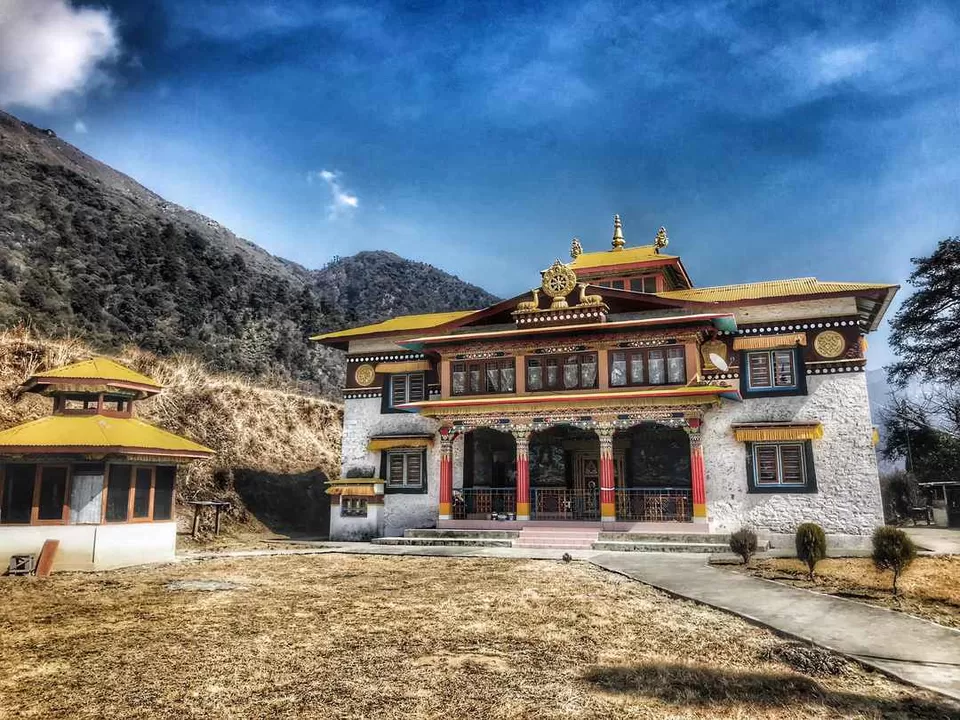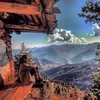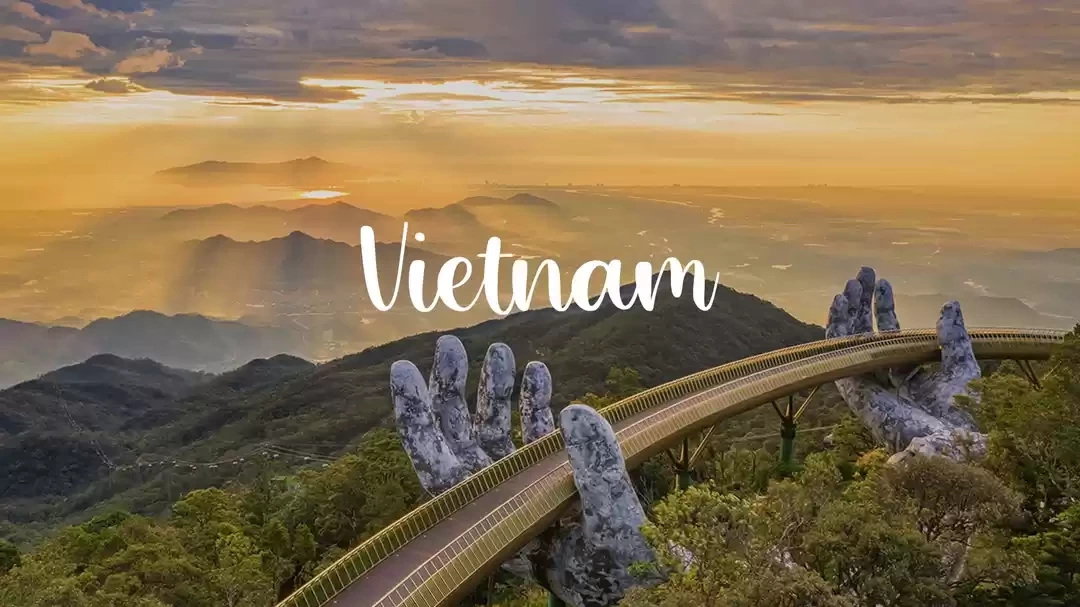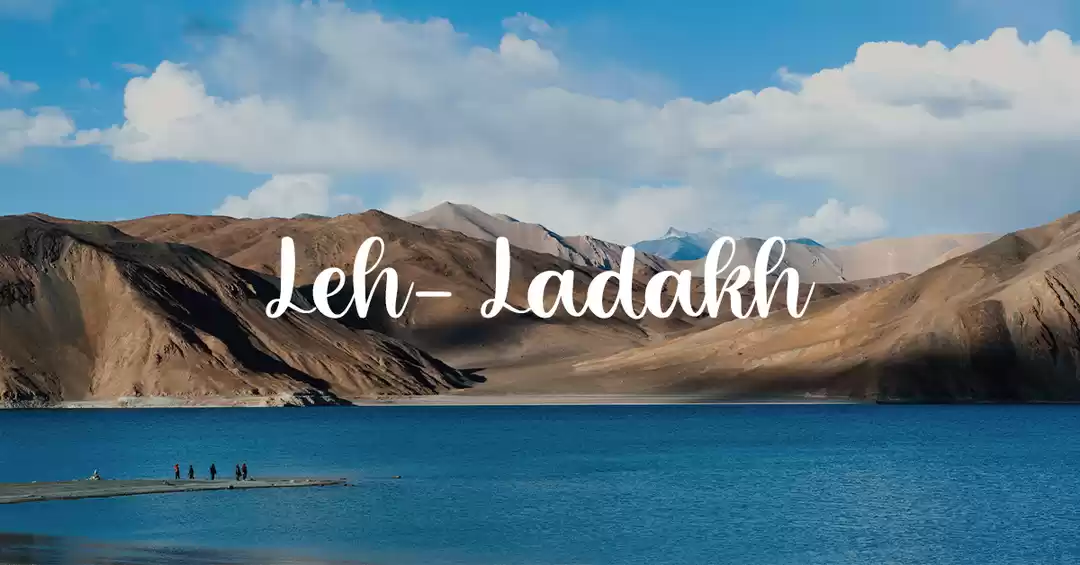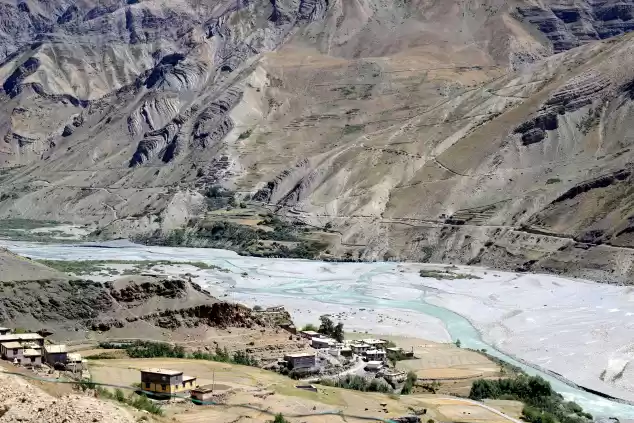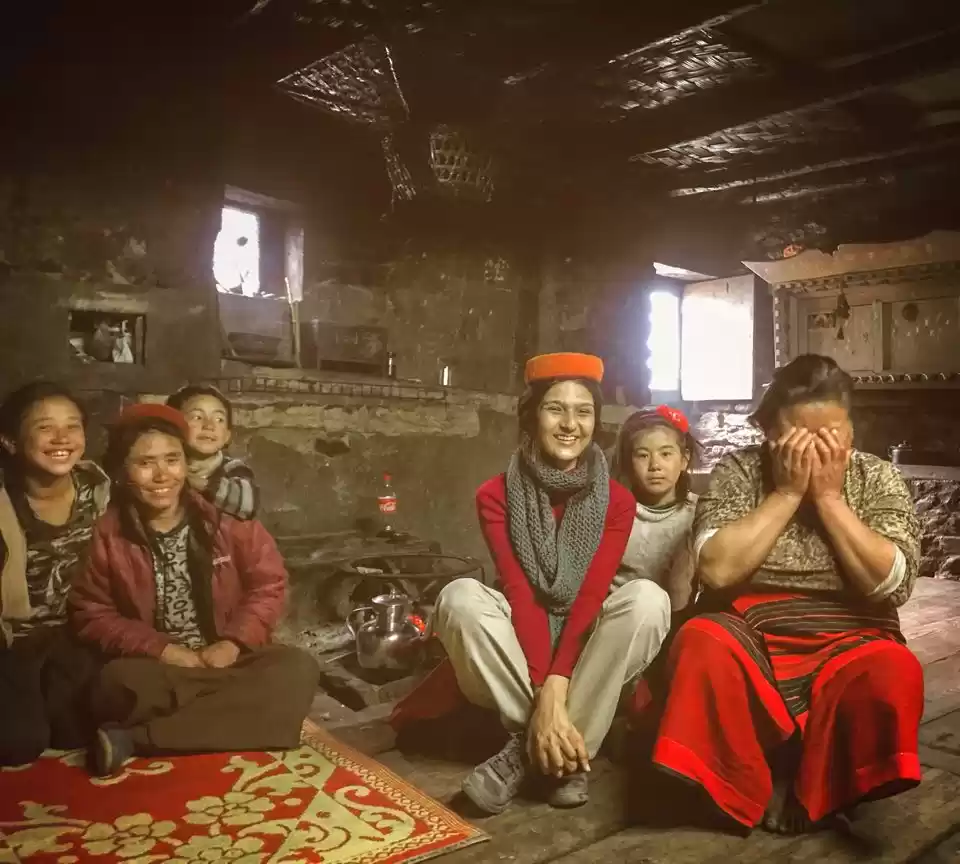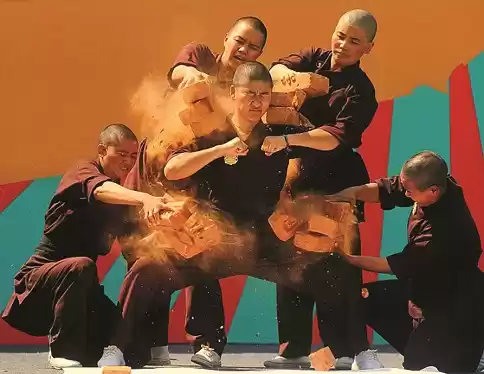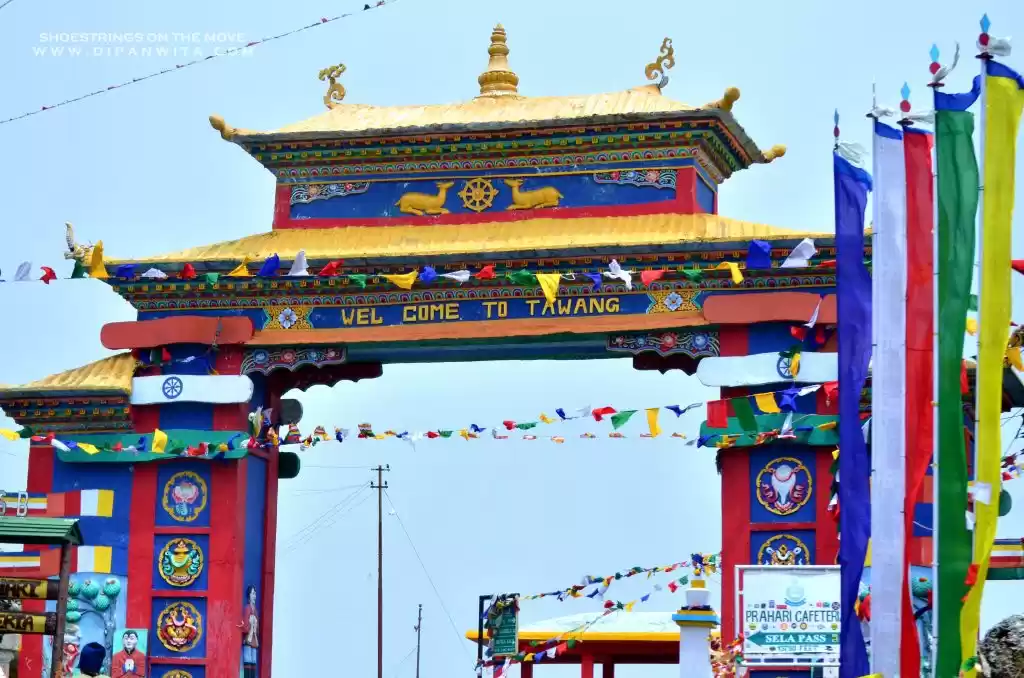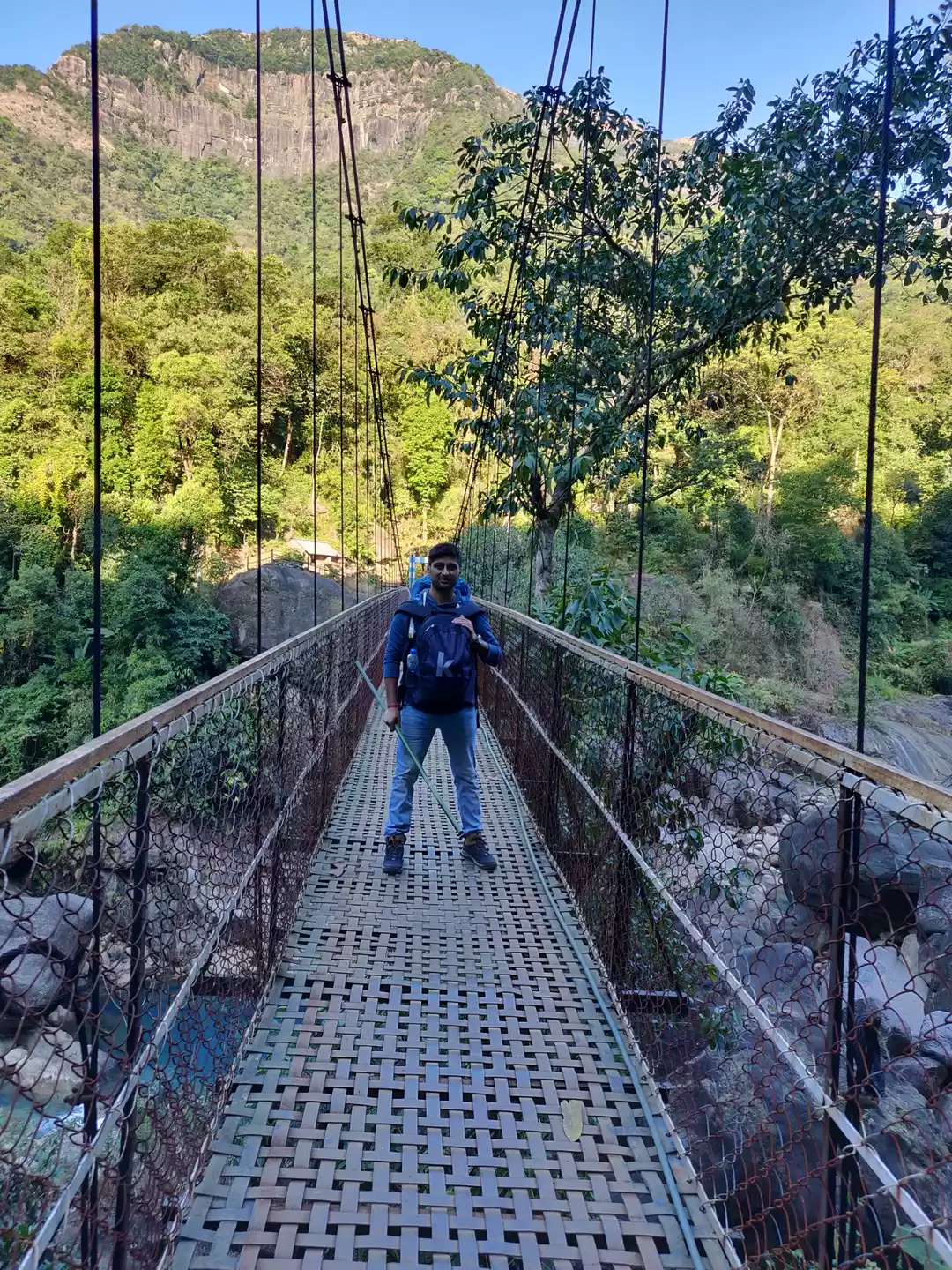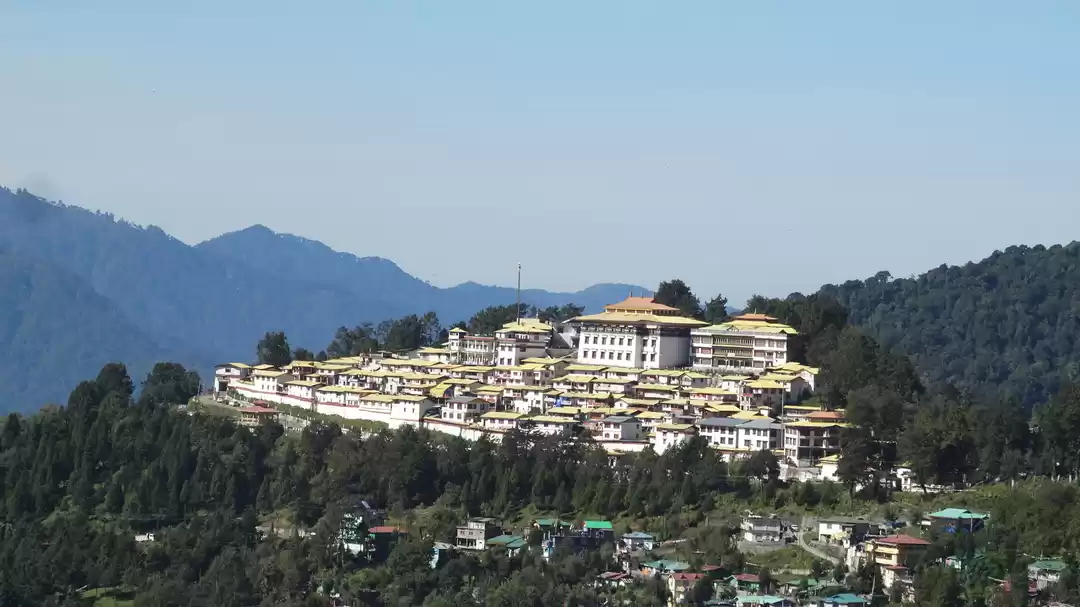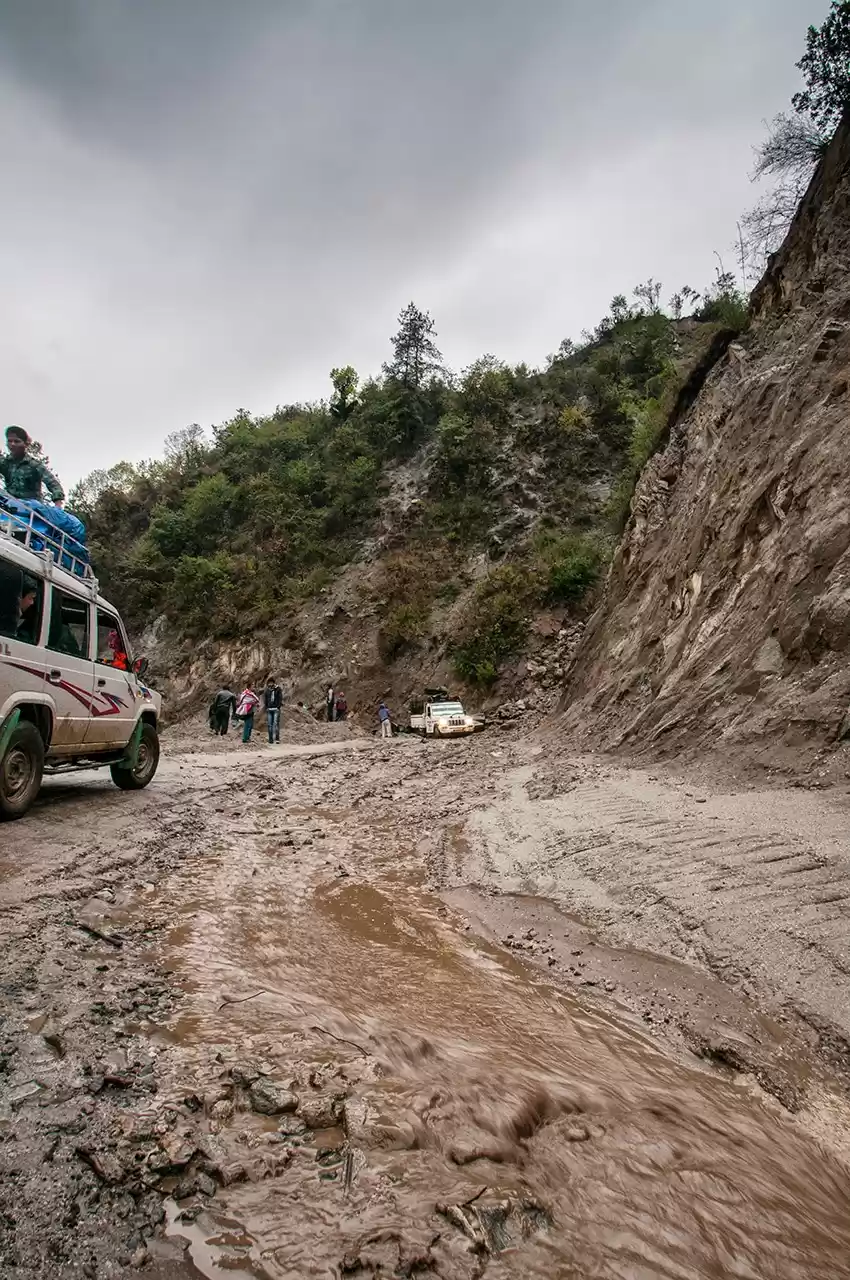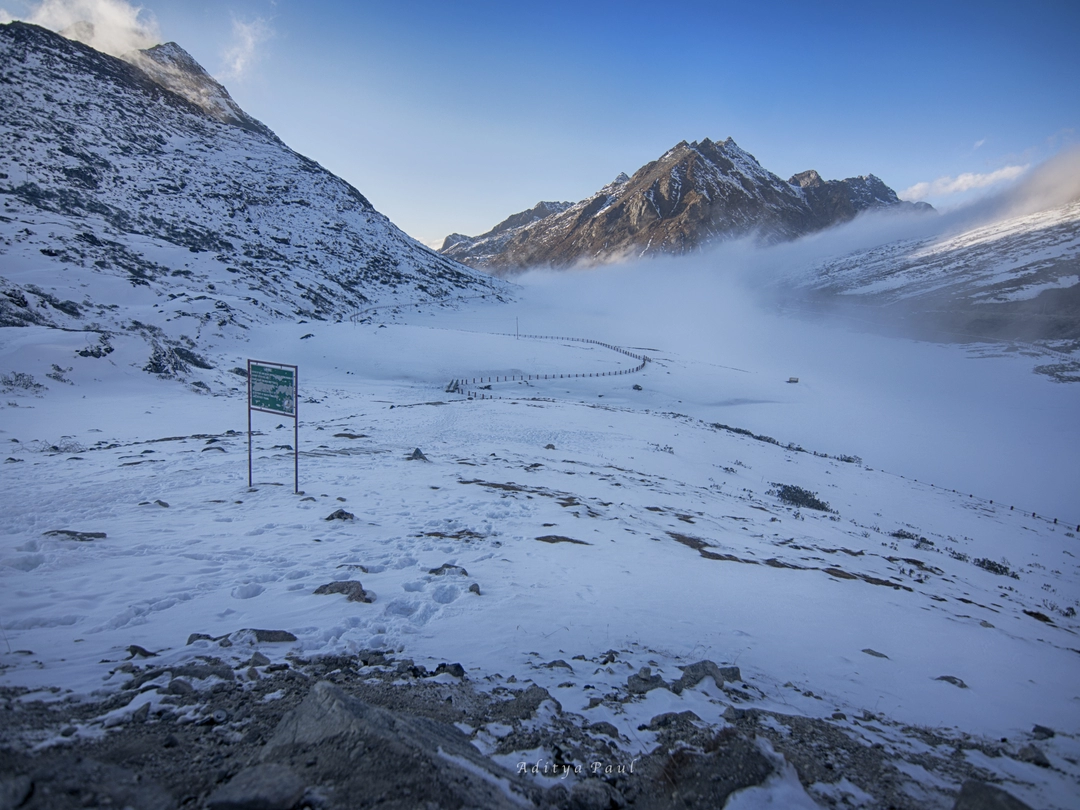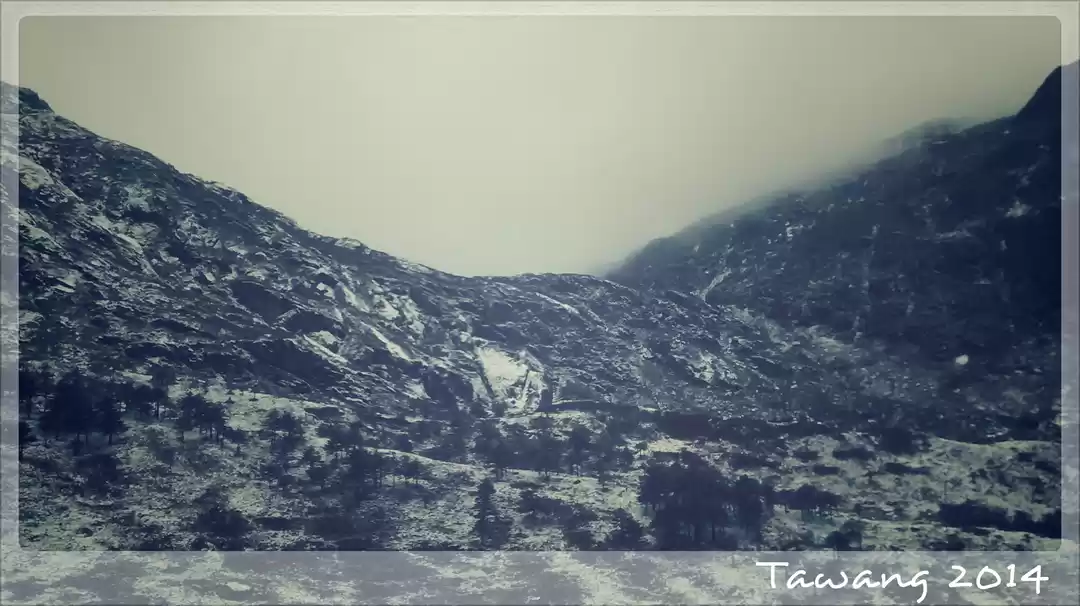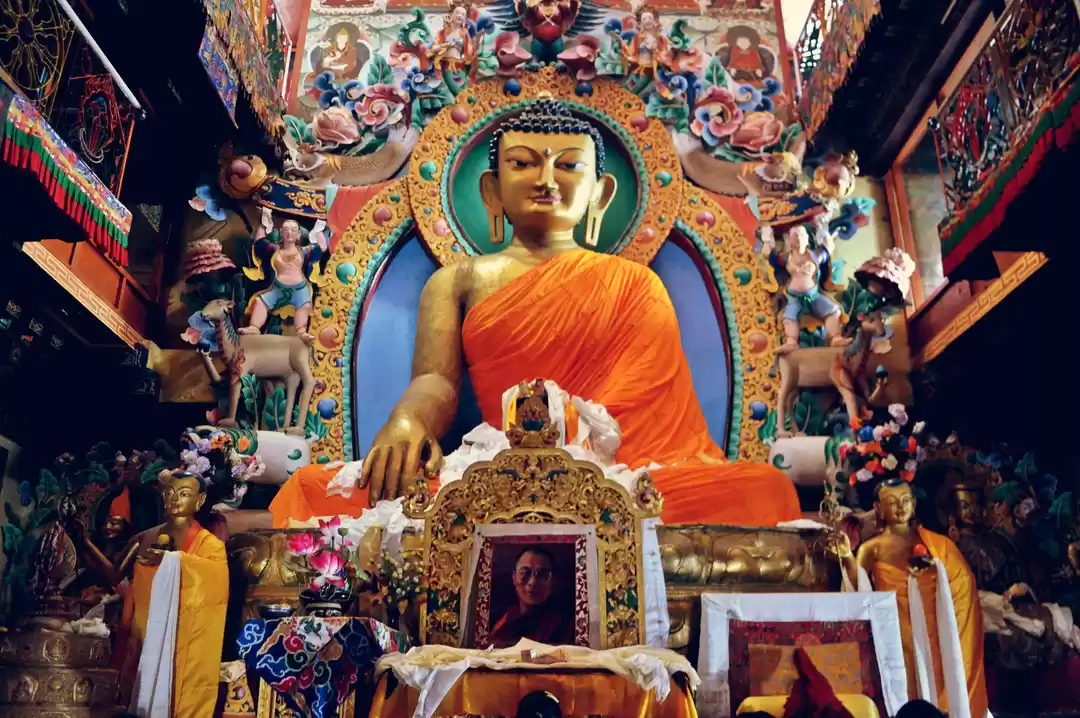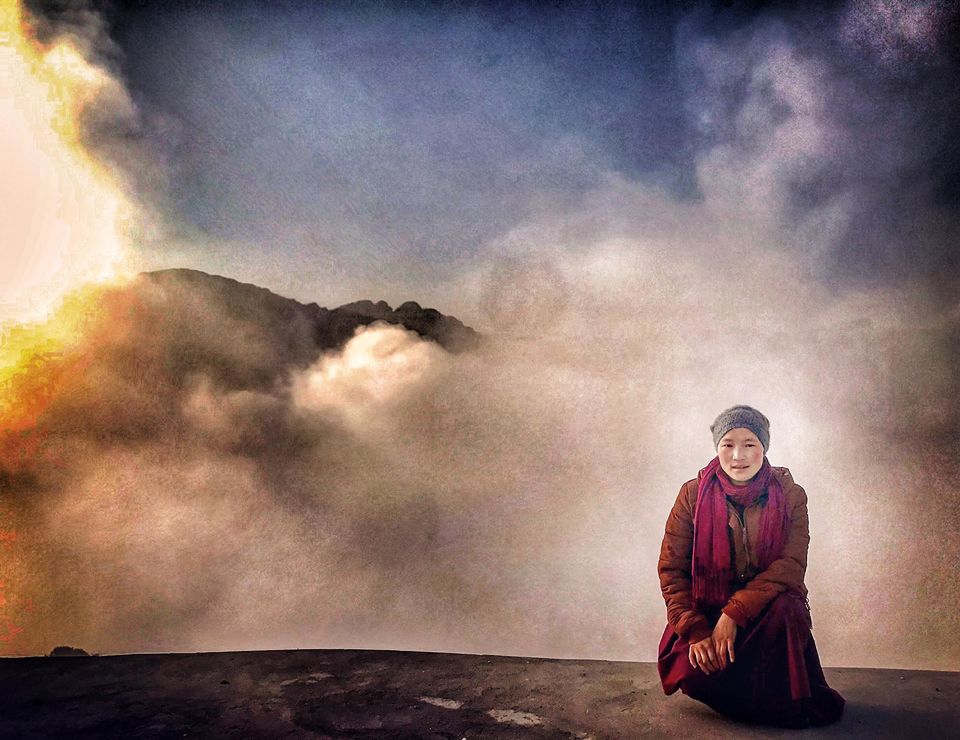
It’s 9.00 am. I sit on my desk, writing about a trek that I did five months back in Himachal when suddenly my Whatsapp buzzes with a video call. Irritated at the loud ringtone obstructing my thoughts, I stare at my phone screen flashing ‘Yeshi calling’! Surprisingly, I find myself grinning ear to ear.
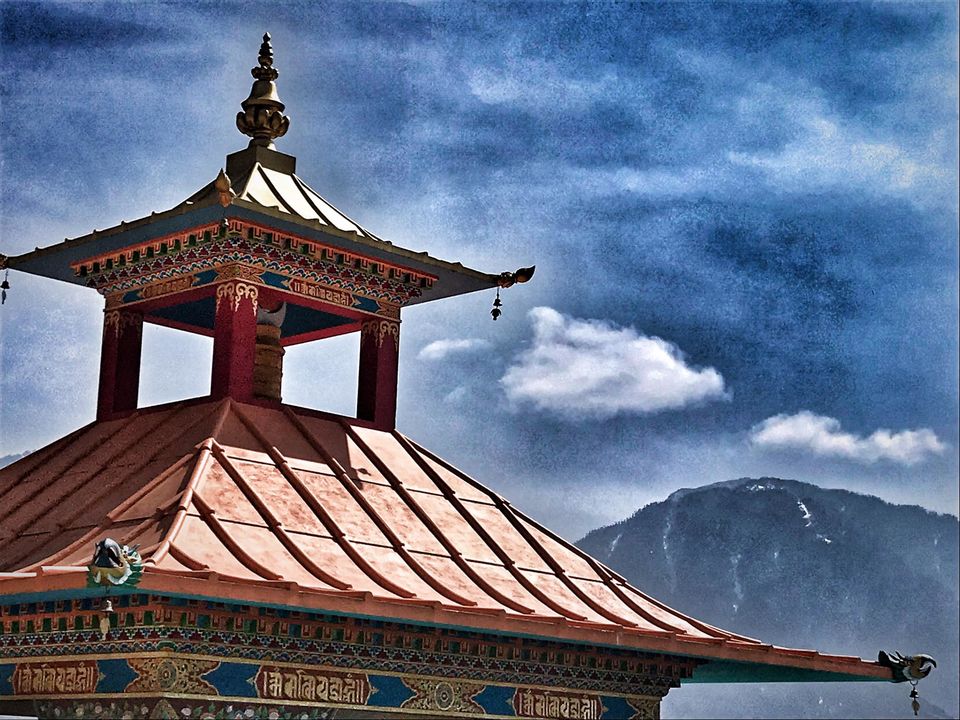
A minute or two of usual greetings later, Yeshi speaks in a rather worried tone "Ma’am, Ani bol raha hai, aap Delhi mat jaana. Coronvirus fael raha hai. Yahin rehna aap. Travel mat karna!" (Hi ma'am, this is Ani. Please don't go to Delhi as the virus is spreading. Stay here only.) I am still smiling while typing this. Friendships that my mountain sojourns give me are priceless. And the ones made in this secluded Gompa on the Eastern Himalayas of Arunachal, with these simple souls in maroon robes are even more special.
The rewind to February seemed to work its magic. Spring was around the corner. While walking in those narrow by-lanes of Khirmu (a small town 25 km short of Tawang), I couldn’t help but stare at this quaint little Gompa perched on a hill top. While buying Parle G for some dogs sitting on the roadside, I asked the shopkeeper what that Gompa was called. He uttered a name that I couldn’t get a hang of but I caught the word ‘Ani’. When I repeated after him ‘Ani Gompa?’ to make sure if i said it right, the man next to him said, "Yes...Ani matlab Lady Monk.’ (Ani means lady monk) Did I hear that right? A Buddhist nunnery on a mountaintop in the eastern Himalayas.
That was my moment of deja vu. All those hikes and bike rides to Kila Gompa in Bhutan flashed back. I knew what I was going to do today. I picked up some extra Parle Gs because I was going to hike up to the Gompa right away. Little did I know then that the hike would not just lead me to the Gompa but also turn out to be a stay over with these enlightened souls who choose the road less taken.
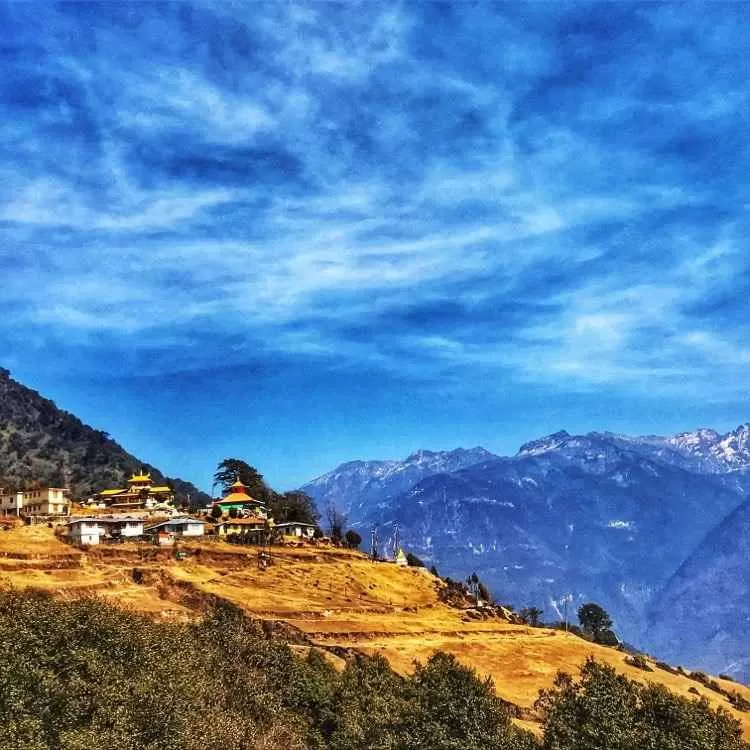
Her cabin was a humble abode with just the basic essentials. A huge bukhari took the center space with one or two floor cushions around it. Kitchen formed a part of the same room. I can never get over the enthusiasm and warmth with which she moved around, laying the rug for me, stacking cushions on top of each other so that I felt comfortable. She just wont let me sit on the floor. While Ani made tea and popcorn for me, my eyes ran around her cabin, curious to find, what defined life here. The bare walls had one or two shelves with rations etc, a tiny room where she slept and meditated while there was another room in the cabin where a young nun aged 16 lived, who was Ani’s niece and was away right now, to see her family in town.
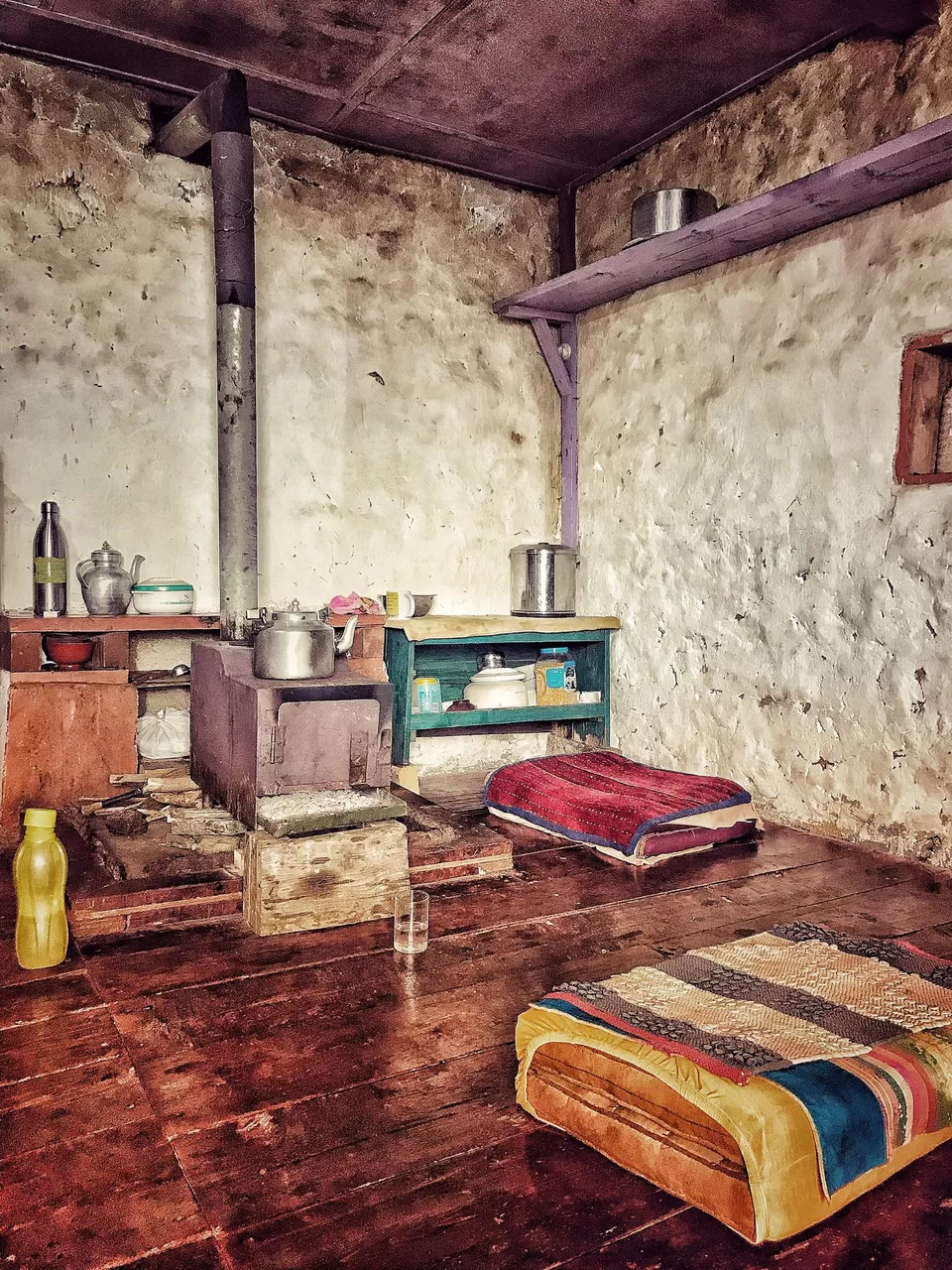
Ani got the puffed rice that she called Nupoh and butter tea, and once again expressed her amusement "Itna dur se akele chalke aaya, koi aadmi log utha lega toh?" (Y She sounded concerned about this stranger she just met
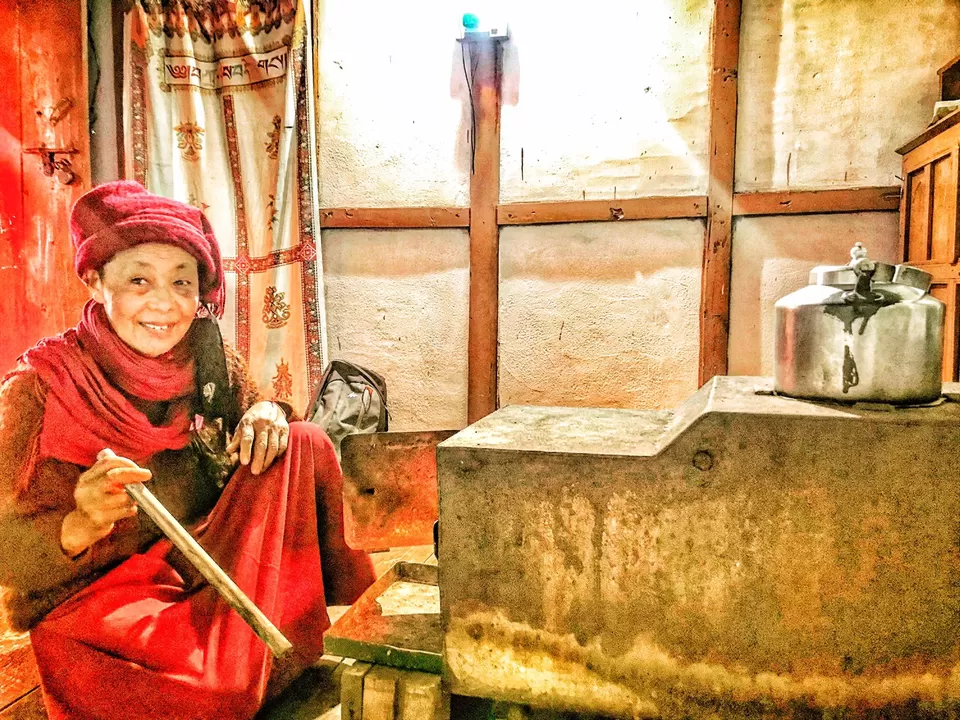
Ani Thupten joined the gompa when she was 30 and belonged to Khirmu. She was the only one amongst her five siblings who chose this path. Her wrinkled smile expressed her contentment in the solitude and spirituality that defined her life. And though their life may look simple and easy but not everyone can withstand this road less taken. In her 30 years of living here, there have been some who lived and left, never returning back. Her tone was not judgemental. One of the many reasons why I love Buddhism. I told her how I loved visiting gompas and had lived in one such nunnery in Bhutan. She was thrilled to see my pictures from there and stunned to know how I knew about Guru Padmasambhava and Alokeshwara Goddess. While skimming through my pictures, she asked me if I would like to stay here. My day was going well, with the conversations in my head not just heard, but granting my wishes the moment I wished for them in my head.
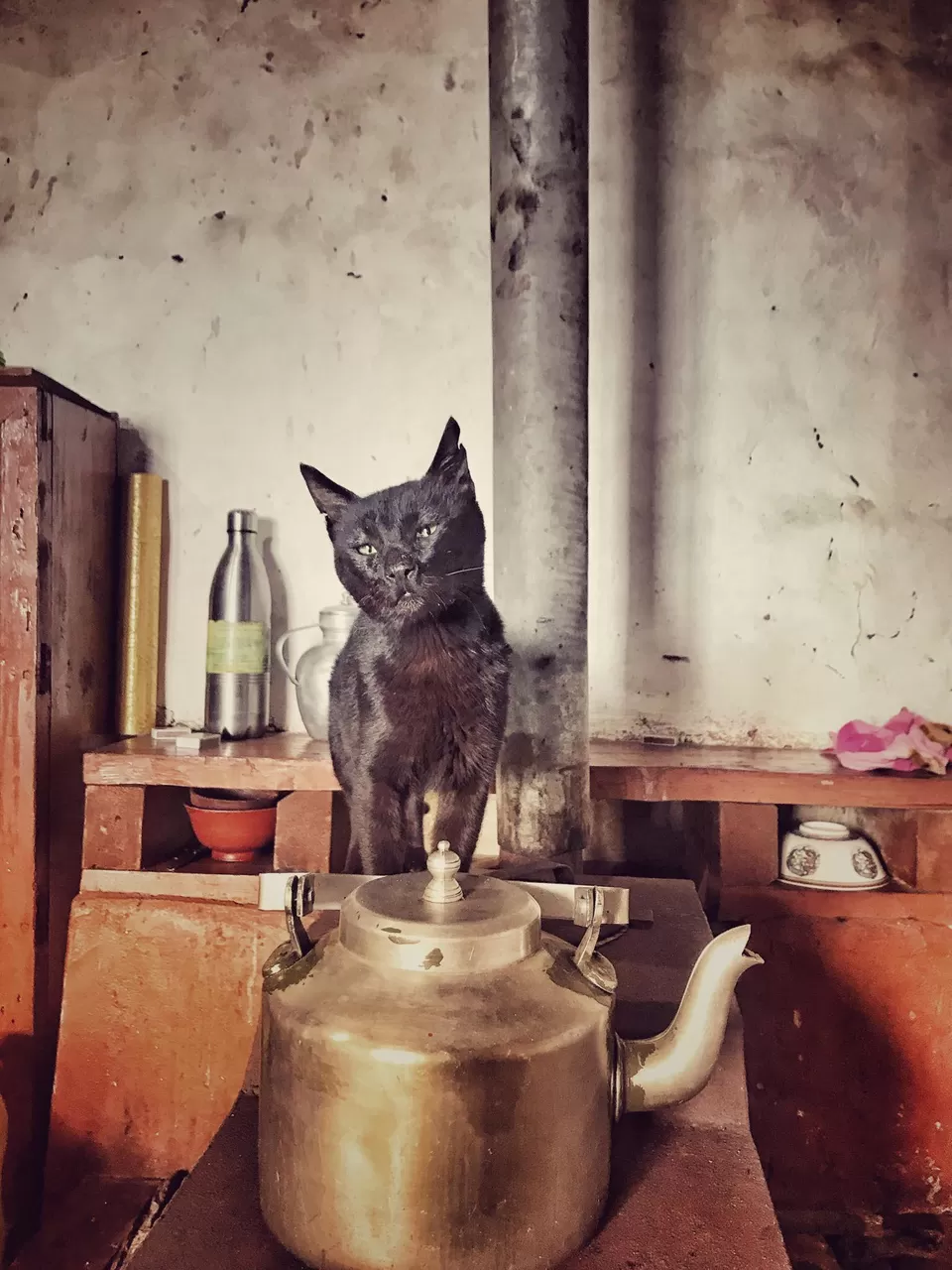
The aluminium kettle whistled as the bukhari over boiled the water,making some of it spill around. Ani opened the bukhari lid, threw some greyish looking powder inside and closed it. She handed the powder container to me asking me to sniff it. On seeing the smell overpowering my senses Ani remarked ‘ ye dhoop hai. Ooncha mein milta hai ye. Yahaan pahaadon mein mahi milega. Sela ke bhi uppar jaana padega.’ This particular incense powder called Poeh. is made out of local herbs found in very high altitude, quite Tibetan in nature. Talking about tibetan influences, Ani asked me if i’d like to have momos for dinner. Was I lucky or was I lucky! Momos is my second favourite after gol gappas? She called Yeshi to give us company in the evening and a few other elderly nuns for tea. She kept telling me ‘Yeshi young hai aapke jaisa. Usko Hindi or English bhi accha aata hai. Aap bore nahi hoga’. Little did she know, she was the best company I had had in a long time.
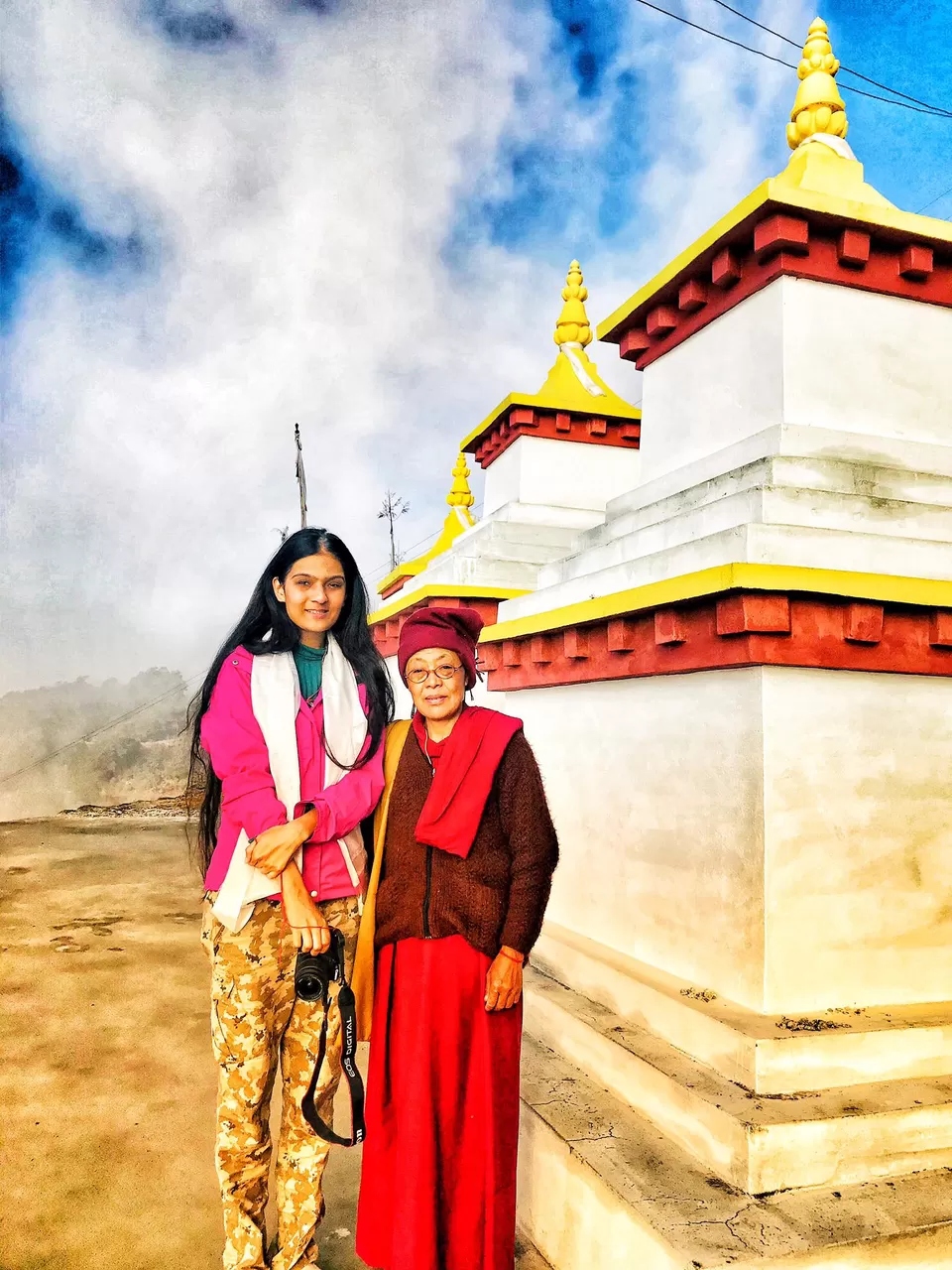
In the evening while taking a walk around the Nunnery, I came across other nuns, some of them washing their clothes in the fresh but icy cold spring water, some sat at the temple praying, while some as young as 8 sat along with their mentors, collecting cabbage and pumpkins from their farms. There were cabins for two or three nuns each, where mostly a senior or old nun stayed with younger ones. I looked at Tashi, the 8 year old, wondering if she knew why she was here, what that maroon robe meant to her, about the path she’s chosen or rather her folks have chosen for her. Standing with a steel bucket full of vegetables, she blushed as I waved at her.
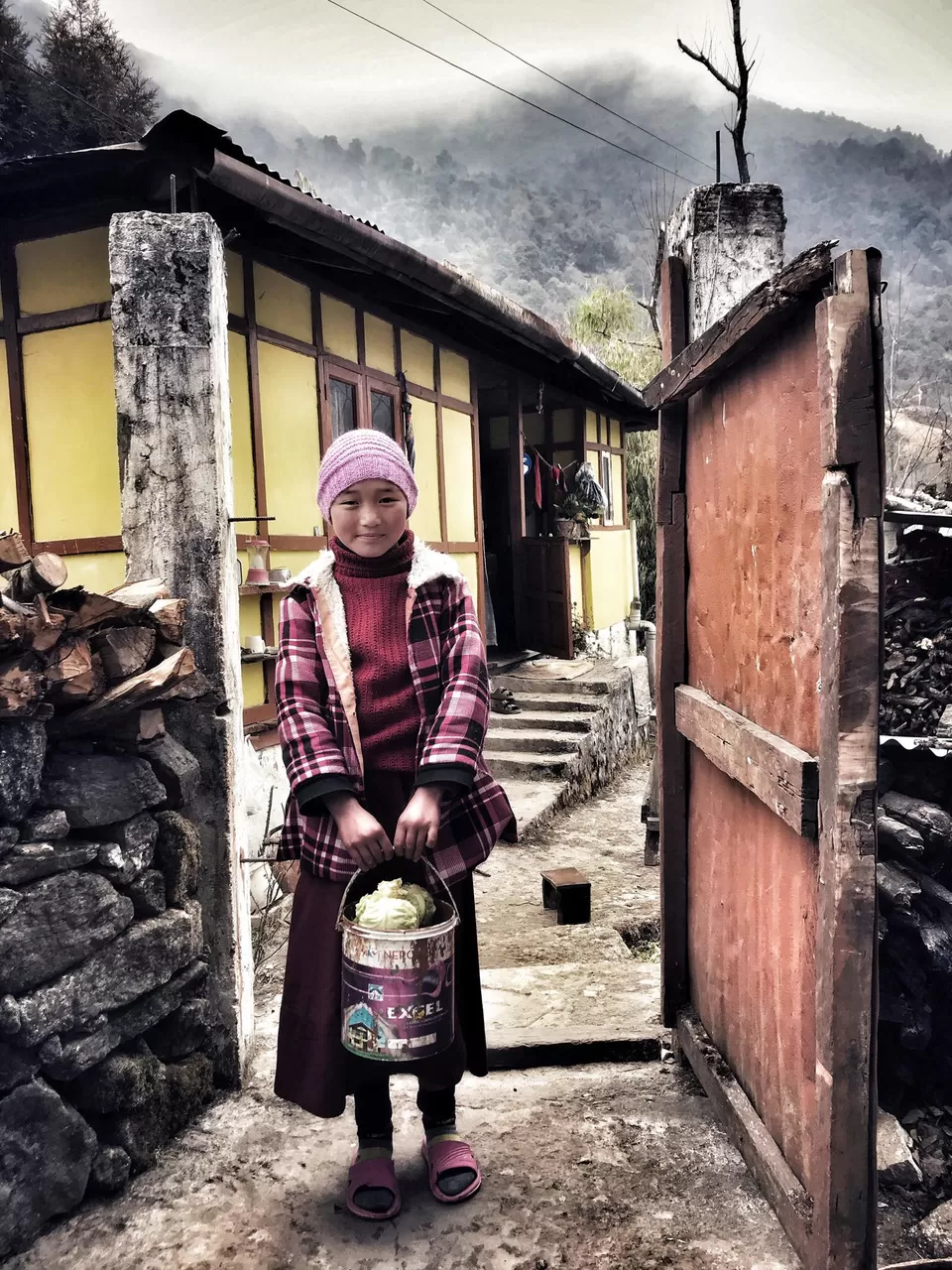
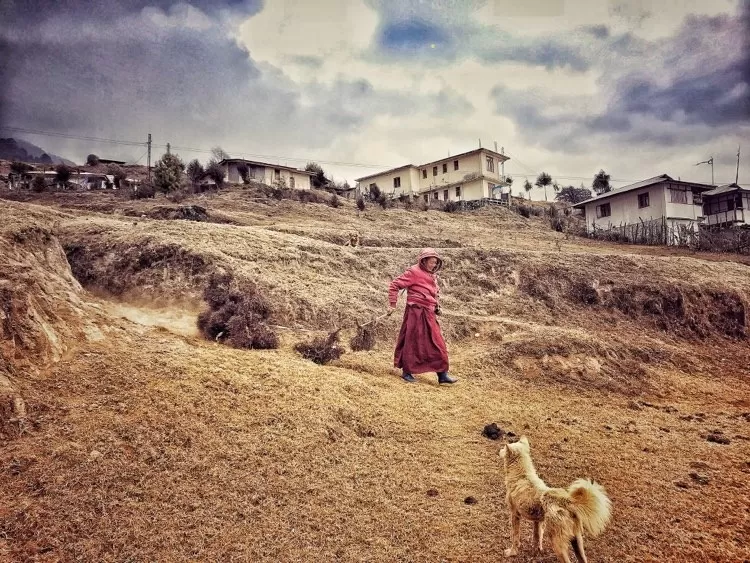
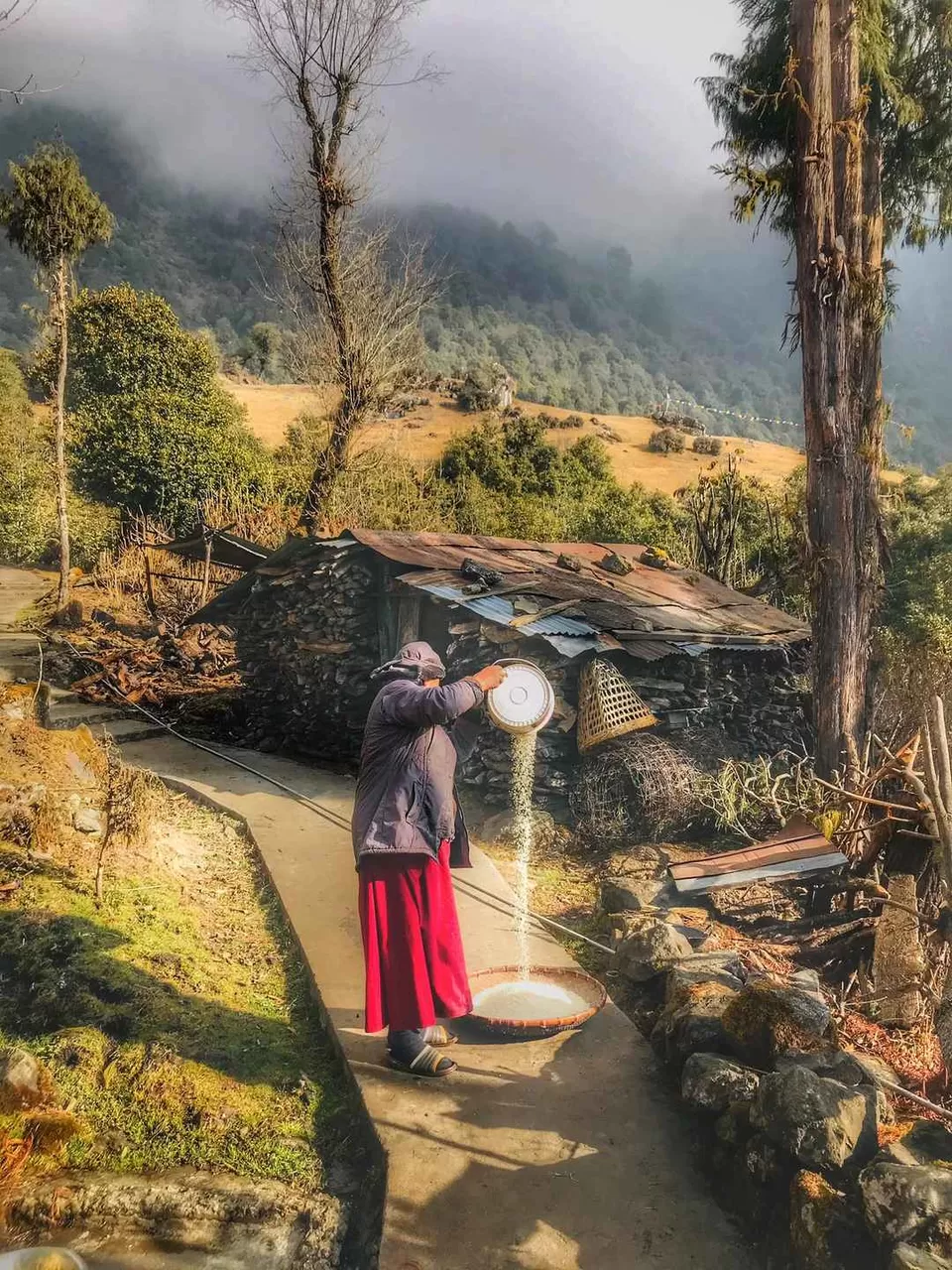
The young nuns are free to study outside in English medium schools and join the nunnery in their summer vacations, practising meditation and learning scripts from the old ones. Aren’t there chances of the Gompa running short of seats I asked. ‘Aajkal ke zamaane mein koi Ani ban na nahi chahta.’ And at times people do come and enrol themselves, but quite a few leave, not being able to cope up with the simple minimal life out here. As the sun drowned behind the Himalayas, Ani lit the incense inside the Sangbum giving rise to the white rings of smoke engulfing the Gompa. This was a daily ritual when the day commenced and ended.
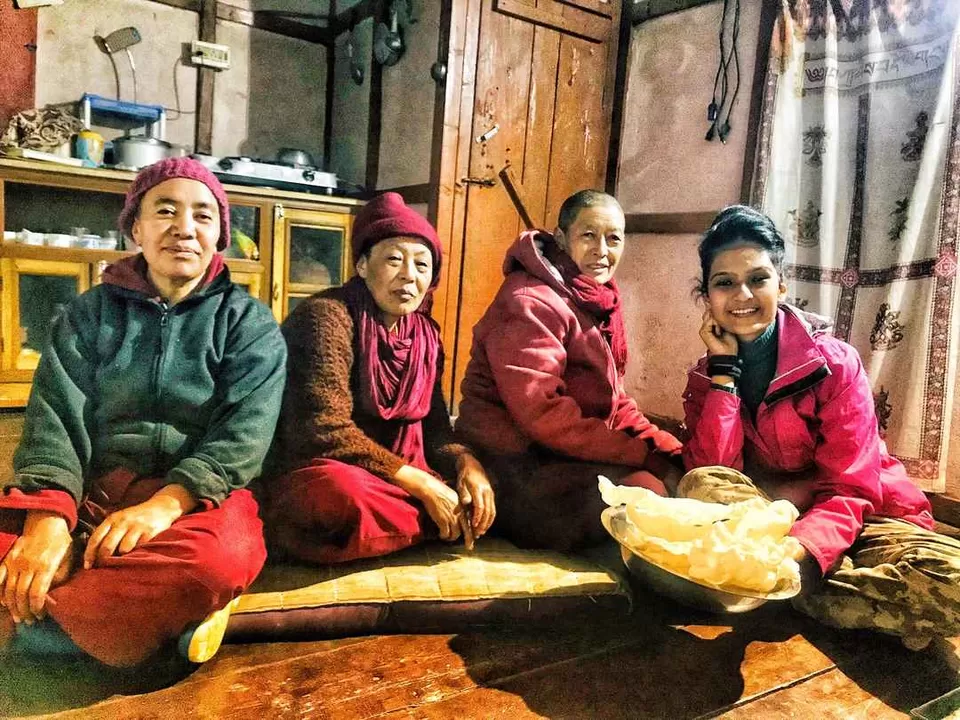
It was a straight road up from Khirmu towards Geshila. I hitch hiked up to Lhou Gompa and decided to walk from here. Though the main road that laid unpaved and rarely taken by visitors except the villagers who stayed on top was as quiet as any hidden path, the sign of a narrow trail going up through the forest and meadows screamed and called me out. And so the tale of the hidden trail to Singsor Gompa began. I deliberately walked on the fallen leaves, hearing them crunch. The winds and cow bells jammed together. The Rhododendrons buds signalled the onset of Spring.
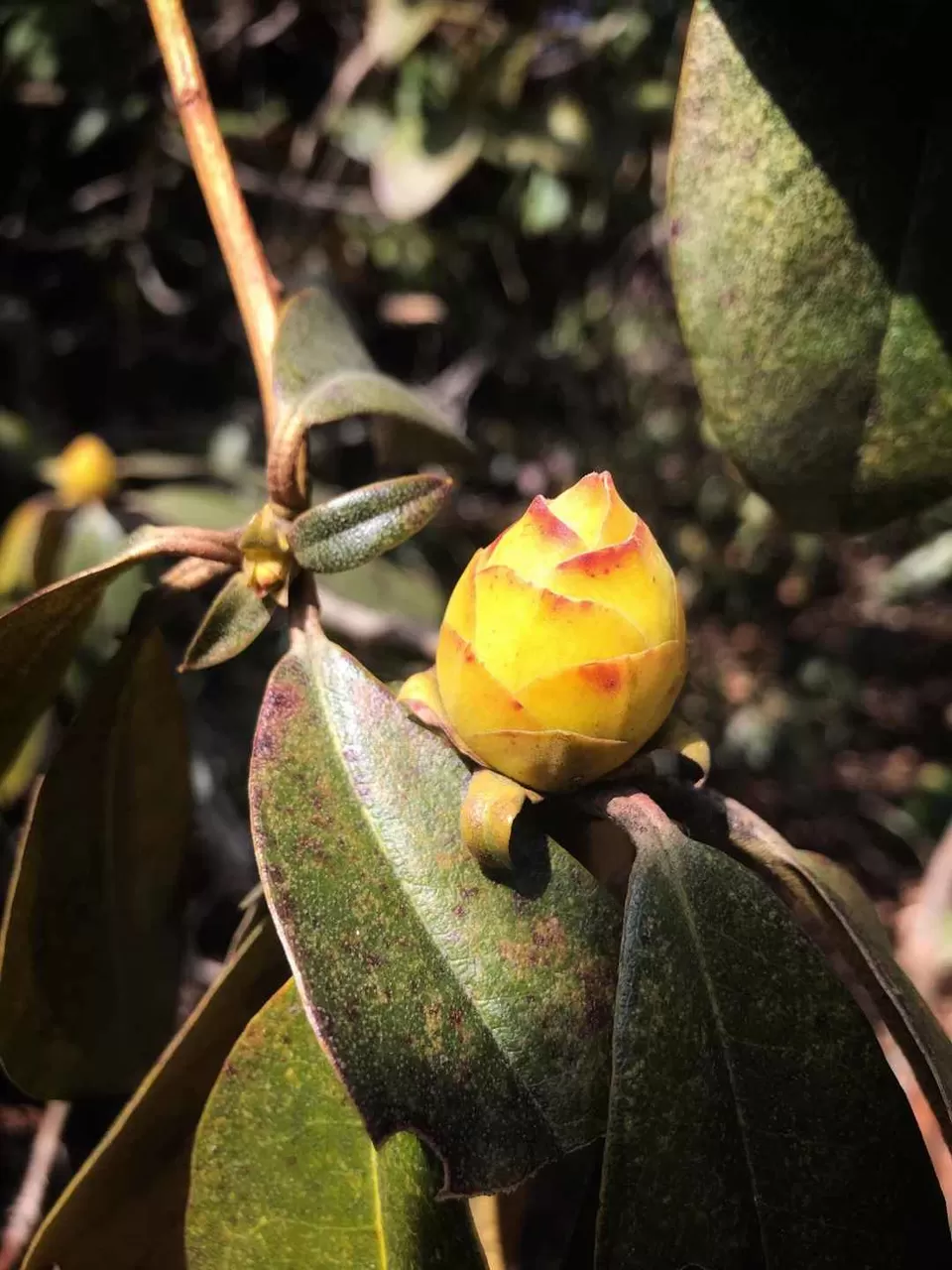
The mighty Himalayas looked elusive, hiding in the sheets of clouds and prayer flags fluttered by. I was alone yet surrounded by these comforting elements of nature. The sun charred me in no time and I regretted not carrying my sipper. On reaching this meadow patch, I turned around to find a small white Chorten, a memorial made by one of the local families for the deceased. I decided to go check it out and guess what I found there. A jug of water. How does nature hear every conversation of mine with myself? I blessed the soul who kept it for tired and weary hikers/passerbys like me.
As I climbed further ahead, a trail diverged into multiple trails. Making a puzzle of sorts. I wondered what if I got lost in the jungle, with no network on my phone. I would have been happily stranded though. Half an hour later, I found myself at a dead end with a stone boundary wall of a lone house on the hill top. Trying not to panic, I decided to catch another trail going on the right, when I saw the Gompa a little far away, beckoning me. While a tiny cluster of houses, about 5 or 6 stood below on a downhill, that village looked surreal. A monastery on top watching over it, while a few scanty mud and stone walled houses, interspersed with farms stood in harmony around each other, far far away from the maddening world.
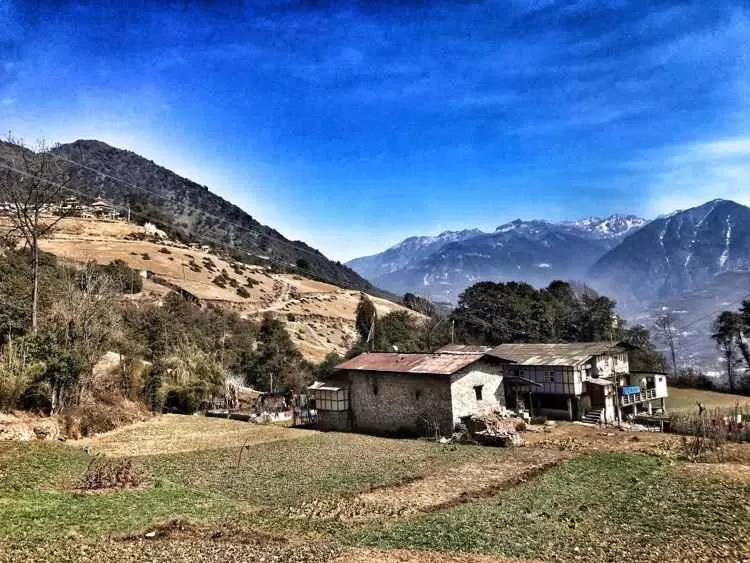
I decided to visit this insanely quiet village called Gemreteng. A flight of cemented steps took me down to a makeshift gate that opened to these six Monpa households. A lady, donning a red hat sat outside the first house, who gave me a rather stern glare. I hesitatingly quipped "Hi! Paani milega?" (Could I get some water please) This is my go-to line when in doubt. She asked this little kid, sitting next to her to go fetch a glass of water for me. Finding the awkward silence a little uncomfortable, I asked her another question "Aapke gaon mein ek gompa hai na?" (There a gompa in this village, right?). She sternly replied, "Yahaan koi gompa nahi hai!" (There is no gompa here!). Okay this isn’t going too well. I didn’t see myself sitting with her like most of my rendezvous with villagers. But I loved this hamlet way too much to let it go. So I tried once again, with a huge smile and a little enthusiasm in my voice "aapka topi bahut accha hai" (Your cap is really nice). Did I finally see her smiling? Though it was for a nano second, she did smile.
I finally sat down next to her, almost throwing myself at her. She must have thought me a creep. I learnt the local nomenclature of the rice (thip) and wheat (nhai) grains ( that she sieved on the dallah made of bamboo. Looking at her house in awe, I told her how pretty it was. Stoned walls painted white with tiny green windows in the middle. She remarked "Kya sundar hai isme? Ye hum gareeb logo ka ghar hai, purana tuta hua". (What's so pretty about it? This is a poor person's house. Shabby and old.) I learnt she had been to Bangalore and that she loved the city life there.
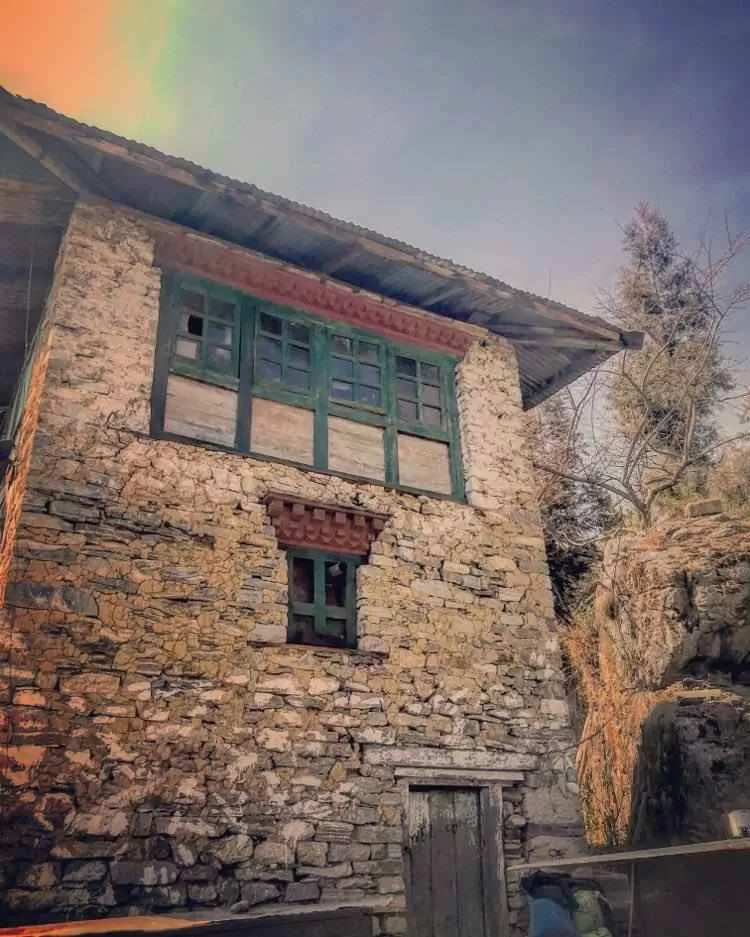
Here we were, two women from different corners of India, wishing we lived each other’s life. She wasn’t as stuck up as I thought her to be initially. Lessons learnt while travelling…not to judge a book by its cover. In Fact we laughed a lot, clicking selfies. She even showed me the biggest radish and turnips I’ve ever seen in her farms. Small lil prayer flags were placed on toothpicks in her farms, probably to protect the crops from any harm.. She sold the veggies in Khirmu town and to the army troops. She told me about this Gompa 300 metres away from her village where a lone monk meditated. I left with the little kid sent by her to go meet this monk, before I finally headed to the Singsor Gompa.
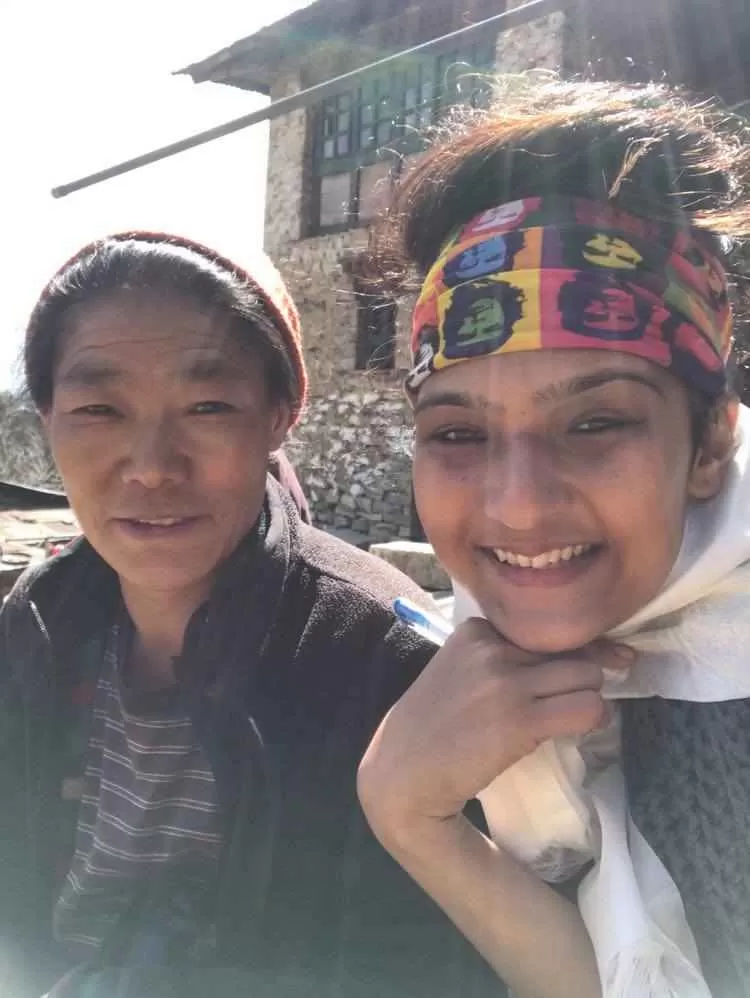
Singsor Gompa, also known as Jangchub Choeling Nunnery Gompa was founded way back in 1960 by His Eminence, the 12th Tsona Lama Thupten Jampel Wangchuk with a vision to flourish Buddhism among the nuns of the Mon Region. What started with a simple one building extended later with time. There are about 40 to 50 nuns residing here, Anis as young as 7 with mentors as old as 60 plus.
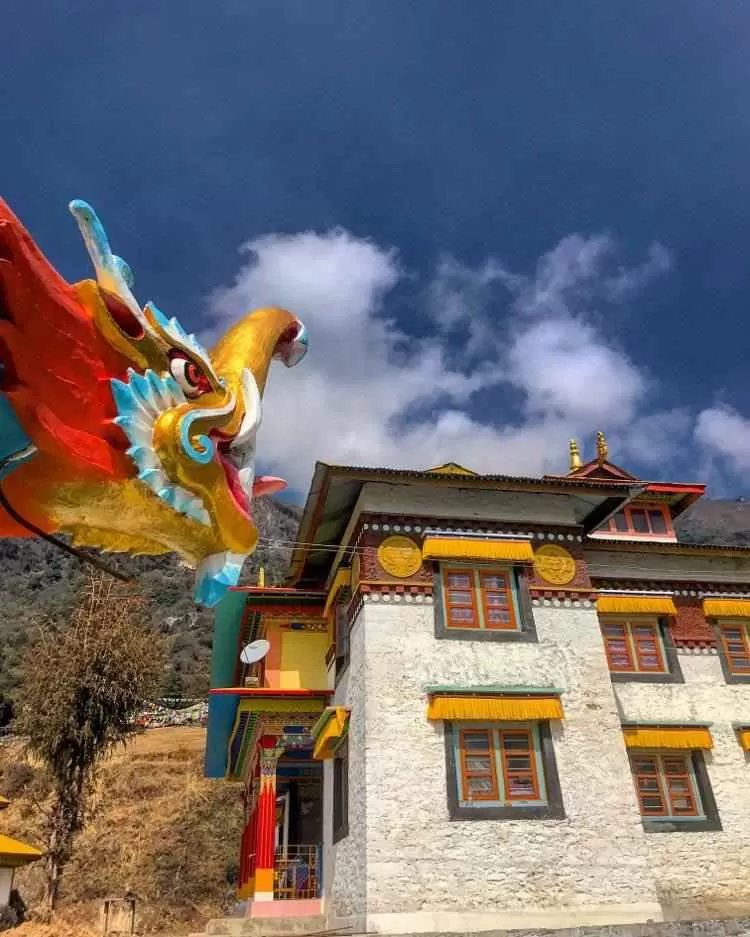
Leaving Gemreteng and Aryadung Gompa far behind, I now stood at the entrance of Singsor. The winds wailed here the loudest, the kinds I heard while staying at the Phajoding Monastery in Bhutan. Two huge prayer flags danced to the tunes of the boisterous wind while bells in the monastery chimed breaking the stillness in air. Though excited to get inside and meet the nuns, a part of me wanted to keep standing here, staring into the oblivion, across the snow clad mountains, deep valleys, and the haze that engulfed it. Nothing! Just nothing comes close to the tranquillity felt at places like these.

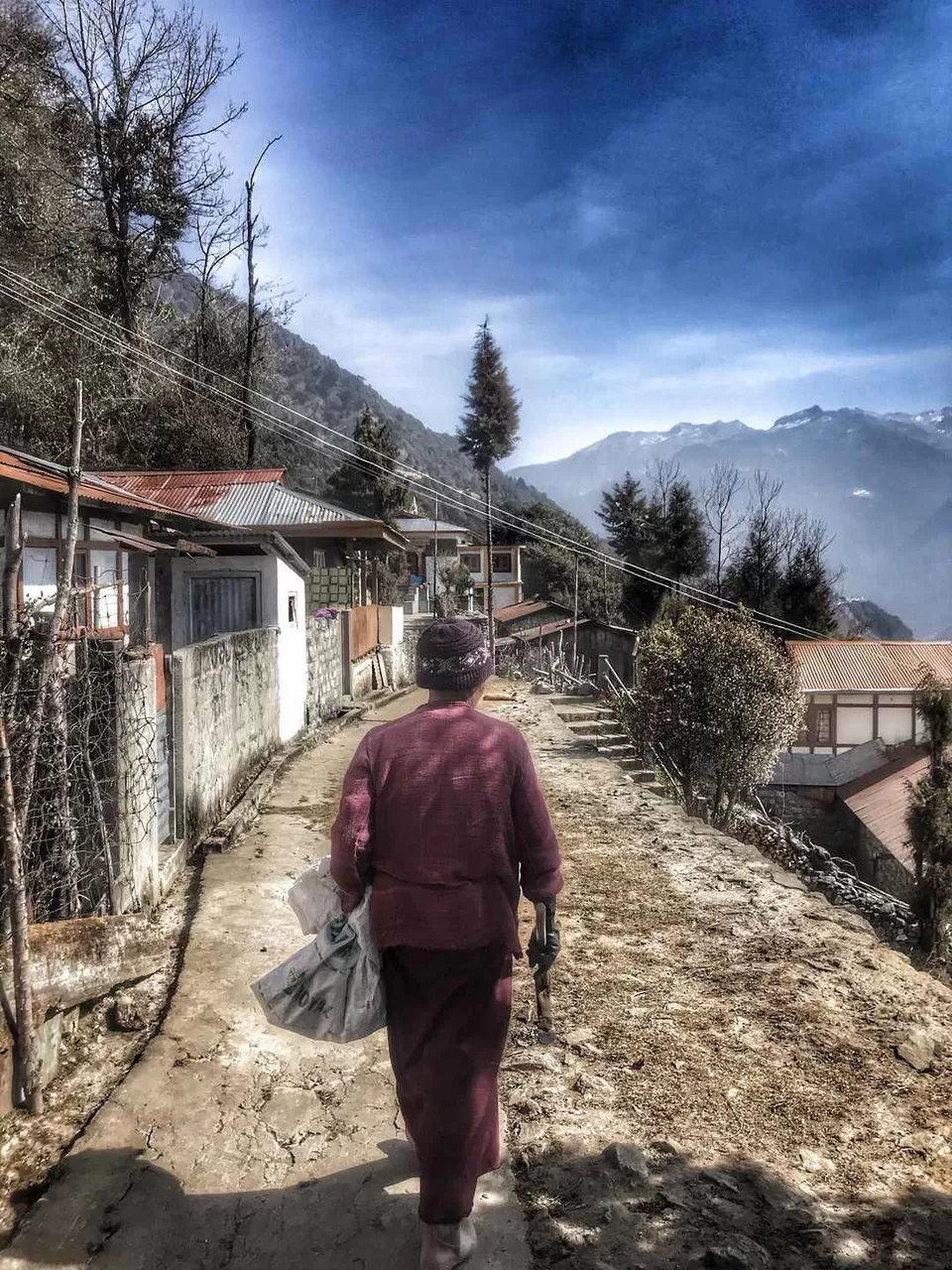
I looked around to see a nun standing there, staring at me, probably out of curiosity. They aren’t used to seeing visitors here. I hesitatingly waved at her and smiled. That was when I first met Ani Thupten who later turned out to be my host at the nunnery and eventually the oldest friend I currently have in my life."Kahaan se aaya?" (Where did this come from?), she asked. I told her about how I got to know about their Nunnery this morning at Khirmu and how impromptu the hike was. She animatedly spoke "Khirmuuu se! Itna dur chalke aaya. Aao! Andar aao. Chai peeyega?" (You've come all the way from Khirmu? That's so far! Come in! Would you like tea?) She walked ahead, her hands covered in soiled gloves, holding a sickle. She was farming in her kitchen garden and I probably disturbed her routine but her inexpiable warmth never let me feel like an intruder.
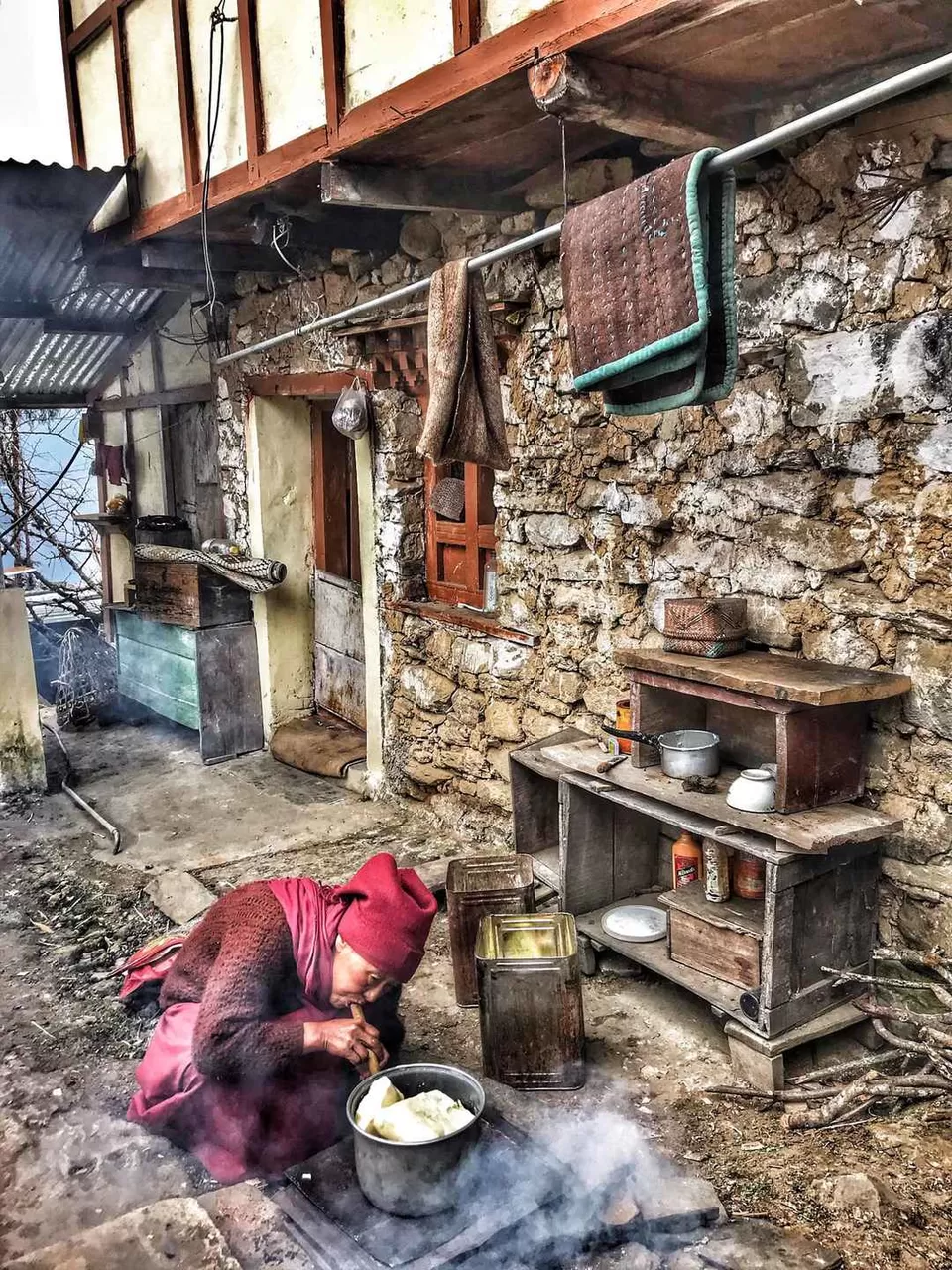
While walking with Ani towards the Sangbum ( an incense house) to light the evening incense, I asked her about the aids and funds and how they all got by. Apart from the little funding by the government, the local villages of the respective nuns help them with rations etc and they are often called to address or conduct sacred religious gatherings on auspicious occasions. Plus they don’t need much for they never own much. I realised the difference between living and hoarding during my stay here at the Gompa. In my one and a half days of stay here, I didn’t look at myself in the mirror because there wasn’t one around. surprisingly I never missed it.
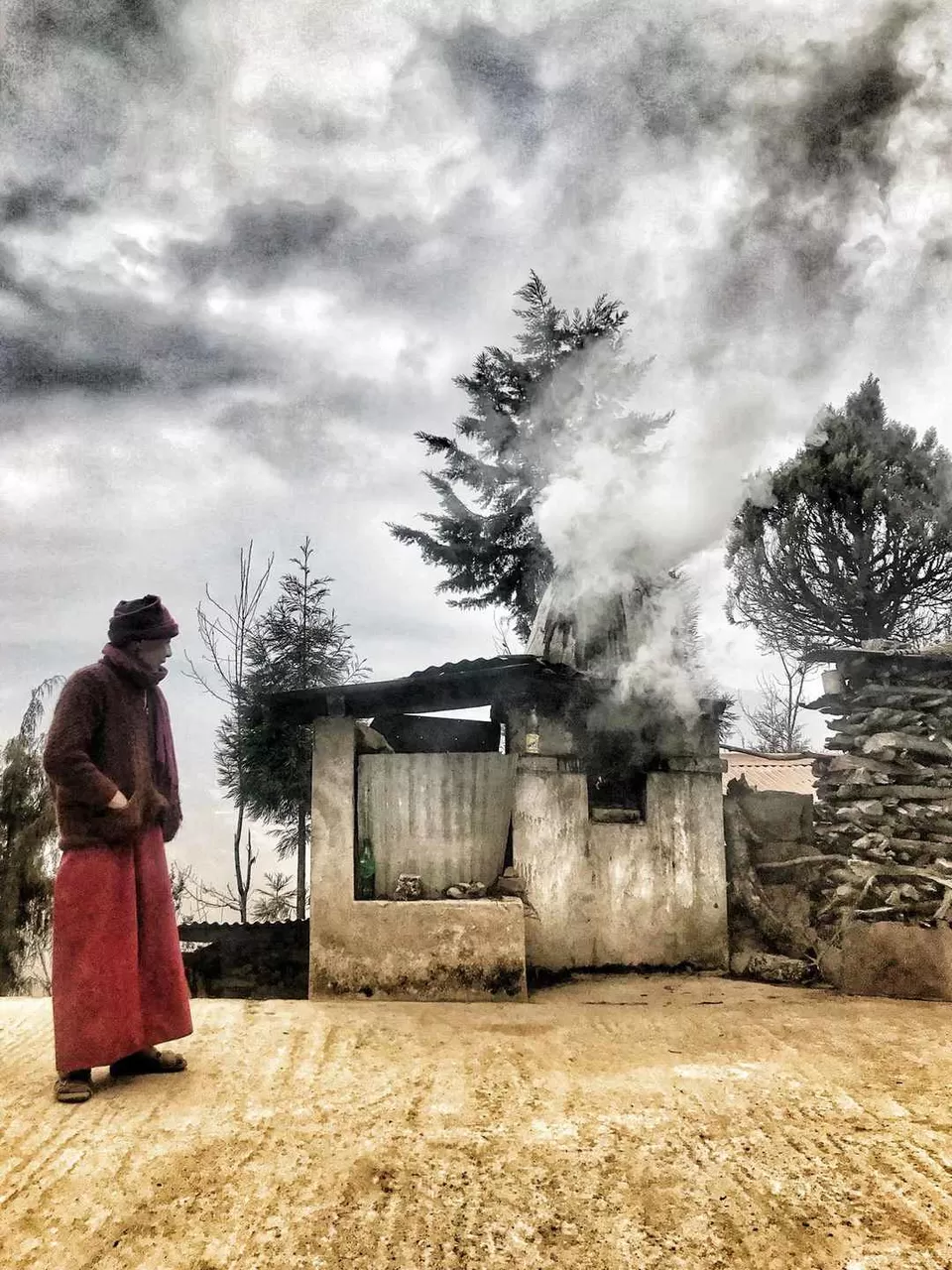
Later in the evening four other Anis came over along with Yeshi. I sat down listening to their folklore about the Holy Waterfall, a place with a religious significance called Chummi Kautsar where monks and nuns often visit in monsoons. One of the Ani’s got Pohri paapad and Khupsey, made out of rice and wheat snacks made for Losar preparations. They all laughed on my flawed use of local language. I picked up a few words from Ani in the afternoon. Ani Thupten had been feeding me all day long so when in the evening she served me a bowl of snacks, I uttered "Mo Koh…Ke Paingeran’ .It means.’.No Thank You..I am too full.’ I felt like a foreigner trying to speak in Hindi, cracking up every one around.
Yeshi made the best yet healthiest momos I’ve ever had. Wheat flour and Lai patta, a local leaf added some extra flavor to the dimsums. I had almost 12 of them. I asked Yeshi what made a young girl like her join the nunnery at 18. She said it was her childhood dream. Her parents didn’t approve of it earlier but are now proud of her decisions. She’s currently studying in Tenga and comes here on vacation. After her 12th she’d be here for good. After hours of chatting, Yeshi said ‘Madam, kya aap mujhe or Pema ko whatsapp pe English padhaayega?..Hamara English kamzor hai’. I quipped, yahaan Eng teacher ka vacancy nahi hai kya? I chuckled as I said that but how ideal would have that been.

While lying down in my bed at night in Pema’s room, I couldn’t help but notice a pile of Tinkle comics on her bedside and a broken 2 inch piece of mirror and a rosary. She was all of this. A little child, naive in her adolescence yet enlightened unlike others at her age. The winds wailed. The bells chimed to its tunes yet again. And I, once again, wrote a thank you mail to an anonymous recipient that remains stowed in my drafts. For I’d look back at it one day and smile reading the stories from Singsor, that I was lucky to call home for a day and for times to come, every time I visit Tawang.
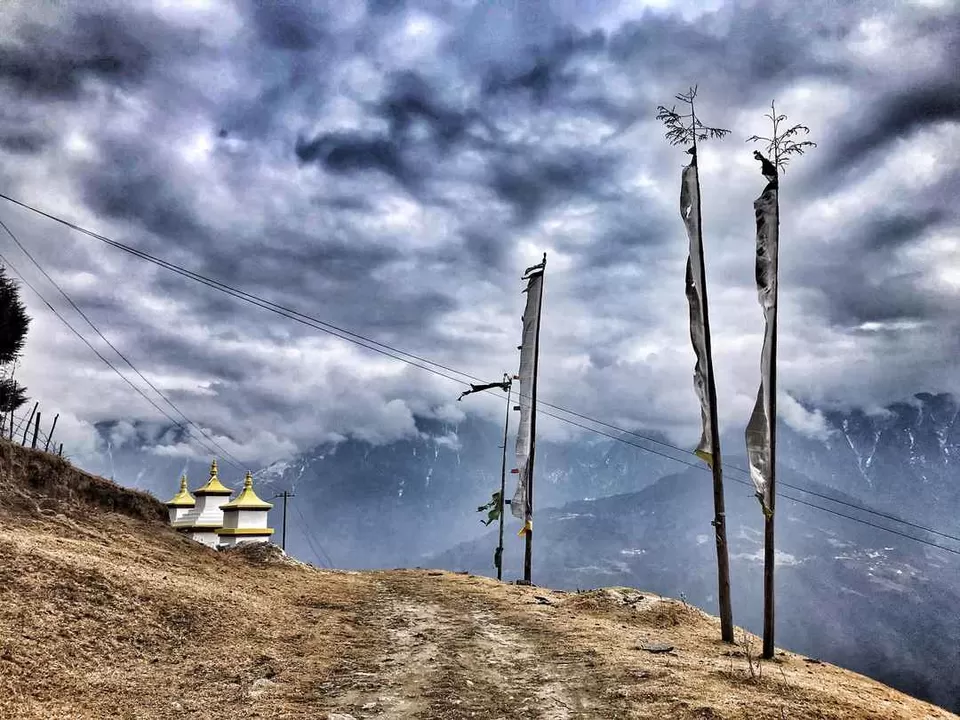
How to get here
Singsor Gompa is situated in Khirmu. Khirmu falls en-route Tawang while driving up from Jang.
Drive up from Khirmu on Geshila road towards Lhou Gompa. Though you can drive all the way to the nunnery, the hike up from village Lungku Dung, is short, easy and breathtaking.
Travel is restricted to hired cabs, shared sumos & buses which ply on majore routes but follow a strict time schedule. One can easily get shared sumos for budget travel from Tezpur or Guwahati. To travel north of Tawang you can contact Mr Tashi (9402404085). i mostly hitch hiked & relied on shared sumos.
Further do remember to apply for Inner Line Permit (ILP) before entering Arunachal Pradesh. you can either contact the tour operator or apply online for the same.
Where to stay
Though I was lucky to crash at the nunnery hence did not have to look for a homestay. In case you are looking for a place to crash, the nearest ones would be at Jang or Tawang.
Hotel Dolma, Tawang
You can book it here
Hotel Tawang Lodge
Phone - 3794222030
What to eat
Tawang is a culinary delight for Tibetan food lovers. Interesting cafes are Hotel Mon Valley (for its momos and thukpa) and Dolma Coffee House for their ambience, Pizza & coffee.
As a kind gesture, do think of carrying a little something, may be fruits or ration that can come in handy for nuns who live in this cut off region. I was charged nothing for my stay here. Bought some Maggie and biscuit packets in bulk for the Anis residing here. Just a token of gratitude.
